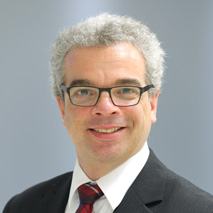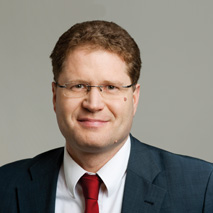Do we need to use expensive biomass as a flexible option in the electricity market of the future?
Managing Director of the German Biogas Association, Dr Claudius da Costa Gomez, and Executive Director of Agora Energiewende, Dr Patrick Graichen, give their answers to this question.
FOR: Dr Claudius da Costa Gomez
 Dr Claudius da Costa Gomez © Fachverband Biogas e. V./Thomas Geiger
Dr Claudius da Costa Gomez © Fachverband Biogas e. V./Thomas Geiger
Every kilowatt hour of electricity generated by biogas plants will be more expensive than electricity from onshore wind power, photovoltaics and water power for as long as there are no real markets for electricity and carbon emissions. If these were to exist, coal-fired power plants would soon be shut down and flexible options for renewable energy would enter the market faster. This would finally drive forward a renewable heat market, and would mean another product from biogas plants would be on offer for a reasonable price. This would make electricity generated from biogas even cheaper.
In the future, a combination of biomethane facilities and power-to-gas systems will transform hydrogen and carbon dioxide into biomethane, which will be stored in the existing natural gas networks and transported to areas where it is needed. Biogas technology therefore offers solutions to two basic issues of the energy transition: we store renewable energy in such a way that there is enough electricity wherever and whenever it is needed.
Should there be no demand for biomethane on power markets, in spite of expectations, it can also be used for renewable mobility in ships and other heavy goods transport. Did you know that every other lorry in the USA is operated by gas? Investing in biogas plants is well worth it, regardless of what the requirements will look like in the future.
Furthermore, the use of biogas offers other positive knock-on effects in waste management, nutrient management and through preventing methane from leaking out of manure storage facilities. No one would talk about the flexibility option of biogas being expensive if these environmental services were financed through relevant markets and not through the kilowatt price for renewable electricity covered by the Renewable Energy Sources Act surcharge. The question is solely when those that speak of a cap on electricity prices and expensive renewable energy sources will understand this. And when they are ready to put this knowledge into practice in their political decisions.
Dr Claudius da Costa Gomez is Managing Director of the German Biogas Association.
AGAINST: Dr Patrick Graichen
 Dr Patrick Graichen © Agora Energiewende
Dr Patrick Graichen © Agora Energiewende
Bioenergy has a big advantage over wind and solar power. We can use it to generate electricity irrespective of the weather conditions and we can control the amount of electricity produced. To the extent that the fields produce sufficient biomass, bioenergy also contributes to a high security of supply of our electricity system through providing zero-carbon flexibility and generating electricity in times of low wind and solar power generation.
BUT: This is quite expensive. The more flexible the plant is, the more gas generated in the fermenters is not used directly, but is instead placed in interim gas storage facilities. In addition, the gas engines and generators must be large enough to quickly process the stored gas. Both of these factors make generating electricity from flexible biogas plants an expensive task.
To put this into perspective, a flexible biogas plant may generate 1 megawatt instead of 500 kilowatts, but only runs 3,000 instead of 6,000 hours a year. The larger gas engines, generators and gas storage facilities that make the system more flexible must be paid for. Electricity generated from bio energy, which, at 15 to 23 euro ct/kWh, is already today two to three times more expensive than electricity generated from solar and wind power (at 7 to 8 euro ct/kWh), will only go on to become more expensive through this increased flexibility. However, we want to make the energy transition as low-cost as possible.
So what does this mean for bioenergy? In the short term, it is important to continue providing a limited amount of funding for this energy source while also making it more flexible. The current corridor of 150 to 200 MW additional biomass plants per year is reasonable. In the mid to long-term, bioenergy must compete with other carbon-free flexibility options. En route towards a world that is fully powered by renewables, bioenergy would then compete with demand-side management, batteries and power-to-gas to replace our current dispatchable generation capacities based on fossil fuels. In the end, competition should decide which technology should provide the efficient backup to wind and solar energy.
Dr Patrick Graichen is Executive Director of Agora Energiewende.

